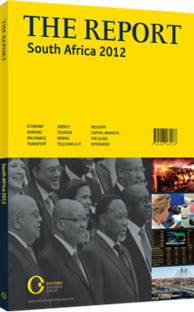Mr. Price: Retail
THE COMPANY: Mr. Price is a South African value fashion retailer, selling mainly own-brand products. The company is one of the nation’s largest clothing retailers and is made up of an apparel division and a home division. The apparel division contributes 72% of group sales and 83% of profits. Mr. Price is characterised by high-volume, low-cost sales and is predominantly a cash-based retailer with around 18.8% of sales on credit. This is a relatively low credit offering in comparison to its clothing peers.
The first Mr. Price store opened in 1987. As of the first half of 2012, the company owns 944 stores, of which 67 are situated beyond South Africa’s borders, throughout Africa. The clothing company targets consumers that lie in the 4-10 living standards measure (LSM) categories, between the ages 16 and 24. However, a large proportion of Mr. Price’s apparel sales come from older age groups.
In the last five years, Mr. Price has achieved an average sales growth of around 16% per annum and annual profit growth of around 21% per annum. The expansion of Mr. Price’s operating margin has largely been attributable to the firm embarking on a highly successful supply chain project named Project Redgold. The project aims to streamline and achieve efficiencies from merchandising planning and procurement through the supply chain pipeline to in-store delivery. Project Redgold will continue indefinitely to continually monitor and create efficiencies within the supply chain. In addition to this, after an aggressive roll-out of its home stores, Mr. Price has been removing unproductive space from its store portfolio, thereby further enhancing its operating margin.
The company’s relatively low credit offering allows it to provide an attractive dividend cover of 1.6 times, due to a lower need to fund its debtors compared to its peers. Mr. Price has demonstrated more defensive characteristics in tougher consumer periods because of its predominantly cash offering. The fact that it benefits from consumer trade of low-cost products when its purse strings are tightened also helps the company thrive in hard economic times.
DEVELOPMENT STRATEGY: Mr. Price’s growth strategy is driven by existing businesses rather than through acquisitions. Market share gains are expected to be driven by store growth and, in the future, online capability. Mr. Price is currently targeting expansion of 50 stores per year, and an increase in local trading space of 5% per annum. Mr. Price also has the opportunity of further improving its operating margin as it continues to rationalise its store base by reducing space in chains that are over spaced.
In addition, Mr. Price has the opportunity to further enhance its operating margin by moving to a more direct sourcing model. The company currently sources 95% of its product indirectly and the advantages of going straight to manufacturer are two-fold. First, it may enhance the company’s bought-in gross margin by cutting out the middleman and therefore reducing the cost of goods. Second, forging direct relationships with manufacturers will allow Mr. Price greater control over its inventory which in turn leads to lower markdown and higher stock turn.
Mr. Price’s focus is to remain a cash-driven retailer, and the company does not plan for credit sales to exceed 25% of group sales. This differentiates the retailer from its main competitors and is a particular advantage when interest rates are rising. Credit sales tend to slow as interest rates rise and therefore being less reliant on credit to grow sales benefits Mr. Price in such an environment.
Mr. Price’s international strategy is focused on the rest of Africa. The strategic emphasis is on corporate-owned stores in regions with high GDP. The group, however, has 24 franchise stores out of its total of 67 international locations. Expansion throughout the African continent is likely to be an important part of the business in years to come. However, the international part of the business is currently very small and still contributes little to overall group profitability.
You have reached the limit of premium articles you can view for free.
Choose from the options below to purchase print or digital editions of our Reports. You can also purchase a website subscription giving you unlimited access to all of our Reports online for 12 months.
If you have already purchased this Report or have a website subscription, please login to continue.

